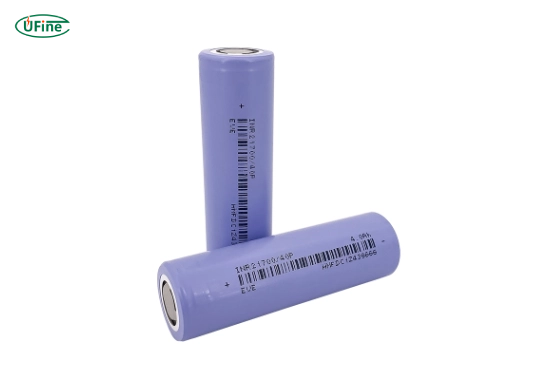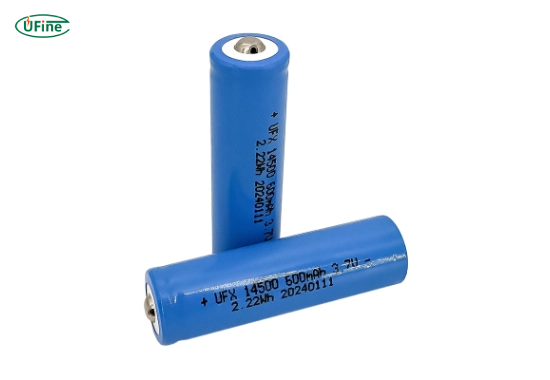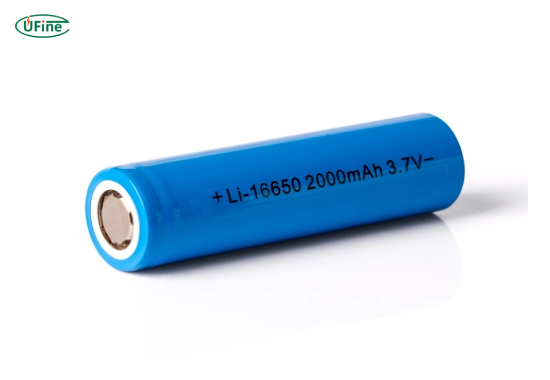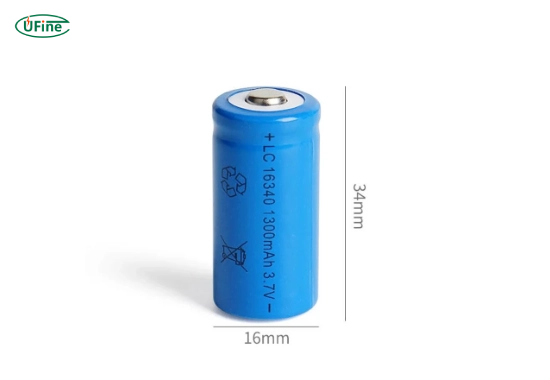The 18650 battery size is super essential for portable power. It works well in many devices and industries. Knowing their size and types helps us use them in things like phones and energy storage. Learning about their size makes them work best in different technologies.
Part 1. What are 18650 batteries?
18650 batteries, named for their size (18mm by 65mm), are high-performance, rechargeable lithium-ion cells primarily used in a myriad of electronic devices. These cylindrical powerhouses pack a punch in energy density, offering substantial power for their compact size. Designed with lithium-ion chemistry, they exhibit stable voltage outputs throughout usage, making them ideal for applications demanding consistent power delivery. Renowned for their versatility, 18650 batteries find homes in devices ranging from laptops and flashlights to electric vehicles and power banks.
Part 2. What size are 18650 batteries?
Standard 18650 Batteries
A standard 18650 battery typically measures 18mm in diameter and 65mm in length. These batteries commonly offer a voltage of around 3.7 volts and a capacity ranging from 1800mAh to 3500mAh. They’re frequently utilized in flashlights, vaping devices, and small electronic gadgets due to their compact size and moderate power.
Series 18650 Battery
In a series configuration, connecting three 18650 batteries, each with a voltage of 3.7 volts, results in a cumulative voltage output of 11.1 volts. This setup retains the individual battery’s capacity but boosts the overall voltage. Series configurations are employed in electric vehicles and power tools requiring higher voltage levels.
Parallel 18650 Battery
When connecting four 18650 batteries in parallel, each with a capacity of 2500mAh, the total capacity becomes 10000mAh while maintaining the voltage output at 3.7 volts. This configuration enhances the overall capacity without altering the voltage, often seen in high-capacity power banks and energy storage systems.
Series-Parallel 18650 Battery
A series-parallel setup might involve two sets of 18650 batteries connected in series (totaling 7.4 volts). Then, these sets are connected in parallel to double the capacity. For instance, combining sets of 3.7V/2500mAh batteries in this manner results in a configuration suitable for applications requiring increased voltage and capacity, such as specific solar power storage systems or medium-scale electronic devices.
Part 3. Comparing the 18650 battery size with other lithium batteries
21700 Batteries
Dimensions Comparison:
21700 lithium batteries possess larger dimensions than standard 18650 batteries. Measuring approximately 21mm in diameter and 70mm in length, these batteries are notably more comprehensive and slightly longer than their 18650 counterparts.
Capacity and Power Output:
The increased size of 21700 batteries allows for higher capacity and energy storage capabilities. Some variants offer capacities surpassing 18650 batteries, making them preferable in devices with extended usage durations or higher power requirements.
Applications:
Due to their larger size and enhanced capacity, 21700 batteries find applications in various high-drain devices and power-hungry electronics. They are notably gaining traction in electric vehicles, whose larger size accommodates higher energy storage, thus extending the vehicle’s driving range.
26650 Batteries
Dimensions Comparison:
26650 lithium batteries are approximately 26mm in diameter and 65mm in length, showcasing a larger diameter than the standard 18650 batteries while sharing a similar length. This increased diameter allows for higher capacity and energy storage.
Capacity and Power Output:
Due to their larger size, 26650 batteries offer increased capacity compared to 18650 batteries. The more prominent form factor allows for enhanced energy storage capabilities, making them suitable for devices that require prolonged usage or higher power demands.
Applications:
26650 batteries are utilized in high-drain devices and applications that benefit from their larger size and heightened capacity. They are commonly employed in heavy-duty flashlights, electric bikes, and solar-powered systems where extended and efficient energy storage is crucial.
14500 Batteries
Dimensions Comparison:
14500 lithium batteries measure approximately 14mm in diameter and 50mm in length, showcasing a smaller form factor than the standard 18650 batteries—the reduced size results in lower capacity and power output.
Capacity and Power Output:
Due to their smaller size, 14500 batteries offer reduced capacity and energy storage capabilities compared to the larger 18650 batteries. Their smaller form factor limits their capacity and power output, making them suitable for devices with lower energy demands.
Applications:
14500 batteries find application in smaller devices, prioritizing portability over extended usage or high power output. They are commonly utilized in compact flashlights, certain types of portable electronics, and devices with significant size constraints.
16650 Batteries
Dimensions Comparison:
16650 lithium batteries typically measure around 16mm in diameter and 65mm in length, sharing a similar length with the standard 18650 batteries but with a smaller diameter—the more minor diameter results in reduced capacity and power output.
Capacity and Power Output:
Due to their smaller size, 16650 batteries offer decreased capacity and energy storage capabilities compared to the larger 18650 batteries. Their reduced form factor limits their capacity and power potential, making them suitable for devices with lower energy demands.
Applications:
16650 batteries find application in devices that prioritize a balance between size and power output. They are used in compact flashlights, portable electronics, and devices that require a moderately sized battery with adequate energy storage.
16340 Batteries
Dimensions Comparison:
16340 lithium batteries, or CR123A batteries, measure approximately 16mm in diameter and 34mm in length. These batteries have a smaller form factor than the standard 18650 batteries and are notably shorter and slimmer.
Capacity and Power Output:
Due to their smaller size, 16340 batteries offer reduced capacity and energy storage capabilities compared to larger batteries like the 18650. The smaller form factor limits their capacity and power output, making them suitable for devices with lower energy demands.
Applications:
16340 batteries find application in smaller devices where compactness and portability are paramount. They are commonly used in compact flashlights, cameras, and devices requiring smaller, lightweight batteries.
Part 4. FAQs
-
Is the 18650 battery the same as the 3.7V?
Yes, 18650 batteries are commonly labeled as 3.7V. However, this voltage is nominal and represents the average voltage of the battery during discharge. The actual voltage can range between 4.2V when fully charged to around 3.0V when discharged. -
Are 18650 and AA batteries the same size?
No, 18650 batteries and AA batteries differ in size. The 18650 battery is more extensive in length and diameter than an AA battery. An 18650 battery typically measures about 18mm in diameter and 65mm in length. In contrast, an AA battery is approximately 14mm in diameter and 50mm in length. -
Can I use AA batteries instead of 18650?
Generally, you cannot directly substitute AA batteries for 18650 batteries in devices designed for 18650s. The sizes and voltages are different. AA batteries may not provide the required power or fit appropriately in devices intended for the 18650s. Always use the recommended battery type specified by the device manufacturer. -
What size heat shrink for an 18650 battery?
Heat shrink sizes for 18650 batteries usually vary based on personal preference and the intended use. Heat shrink tubing with a diameter of around 18mm (before shrinking) is commonly used for 18650 batteries. This size provides a snug fit and protection for the battery without being excessively tight.
Related Tags:
More Articles
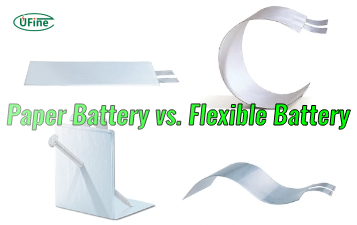
Paper Battery vs. Flexible Battery: What’s the Difference and Which Is Better?
Paper vs. flexible batteries: learn the key differences, benefits, and which power source fits best for wearables, sensors, and smart tech.
What to Know Before Buying a Tiny LiPo Battery for Your Project
Tiny LiPo batteries are powerful and compact. Learn how to choose the right one for your project with specs, safety, and charging tips.
Bloated LiPo Battery: Will It Explode?
Will a bloated LiPo battery explode? Discover the causes, risks, safety steps, and expert tips to avoid disaster and protect your gear. Must-read safety guide!
12V 100Ah Lithium Ion Battery Price: Full Guide
Learn about 12V 100Ah lithium-ion battery price, from cost ranges to best brands, hidden fees, and how to get the best deal. A must-read for smart buyers!
Resistance and Conductivity: What It Means for Your Lithium Batteries
Resistance and conductivity impact lithium battery performance, lifespan, and safety—learn how they work and why they matter.

